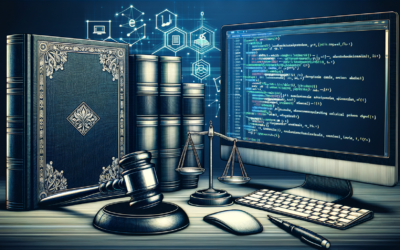Algorithm transparency
In the digital age, the transparency of algorithms has become a growing concern for users and regulators alike. The rise of information and communication technologies has led to a significant increase in the use of algorithms in a variety of fields, from online product recommendations to judicial and administrative decision-making. This article explores the challenges of algorithmic transparency, its legal implications and the means to achieve it.
What is algorithm transparency?
Algorithm transparency refers to the ability to understand and analyze the decision-making mechanisms of algorithmic systems. This often means being able to examine the source code, operating data and decision criteria of algorithms, particularly when they are used for critical functions: predictive justice, recruitment, credit granting, etc.
The importance of algorithmic transparency
There are several reasons why algorithms need to be transparent. First of all, there’s the quest for justice and fairness: decisions based on erroneous or biased data can harm specific individuals or groups. What’s more, transparency is essential to maintain public trust, especially when algorithms influence important aspects of everyday life.
Consequences of a lack of transparency
Algorithmic opacity can lead to a lack of accountability and difficulty in detecting or correcting errors and biases. This can affect not only individual life, but also social equity in general. For example, in predictive justice, a lack of transparency can lead to unequal or discriminatory sentences. Addressing the issue of predictive justice in this article is therefore essential to understanding the scope of the subject.
The benefits of greater transparency
Greater transparency means easier control for users and regulators, enabling them to check that algorithms comply with ethical, legal and technical standards. It also fosters innovation by enabling developers to learn from past mistakes and continuously improve system performance. A case in point is the field of legal analytics, where transparency can significantly improve the quality of legal forecasts and analyses.
Challenges to algorithmic transparency
Making algorithms transparent brings its own challenges. Some of these challenges relate to technical complexity, while others are linked to the protection of intellectual property or the trade secrets of the companies developing these algorithms. The law of robots and automated systems is emerging as a key legal field in this respect.
Complexity and intellectual property
Some algorithms, particularly those using deep learning, are so complex that they are often referred to as “black boxes”. This complexity makes it difficult to understand how they work. What’s more, companies may resist disclosing algorithms to protect their proprietary technology, citing competitive risks if their secrets are exposed.
Frequently asked questions
Here is a list of frequently asked questions about algorithm transparency.
Are regulators demanding algorithm transparency?
Indeed, several jurisdictions are beginning to introduce regulations requiring a form of transparency for algorithms, especially where they have a significant impact on citizens. The General Data Protection Regulation (GDPR) in Europe is a major example that highlights the right of every individual to obtain explanations about algorithmic decisions concerning them.
What tools are used to ensure algorithm transparency?
Algorithm auditing tools, regulatory frameworks and ethical guidelines exist to promote transparency. The use of explicability and interpretability methods is encouraged to make self-learning decision-making systems more comprehensible. Legaldata mining can also be an asset for analyzing and understanding the decisions made by algorithms.
What role does artificial intelligence (AI) play in the transparency of algorithms?
AI, especially AI-generated explanations, can contribute to a better understanding of algorithmic decisions. However, this can also bring additional difficulties, as some AI models are notoriously opaque. Navigating the complexities of AI requires an in-depth knowledge of the field, as evidenced by the site dedicated toartificial intelligence in law.
In conclusion, the transparency of algorithms remains a crucial contemporary challenge. It touches on fundamental questions of responsibility, justice and ethics in our increasingly automated society.Autowiredsys




